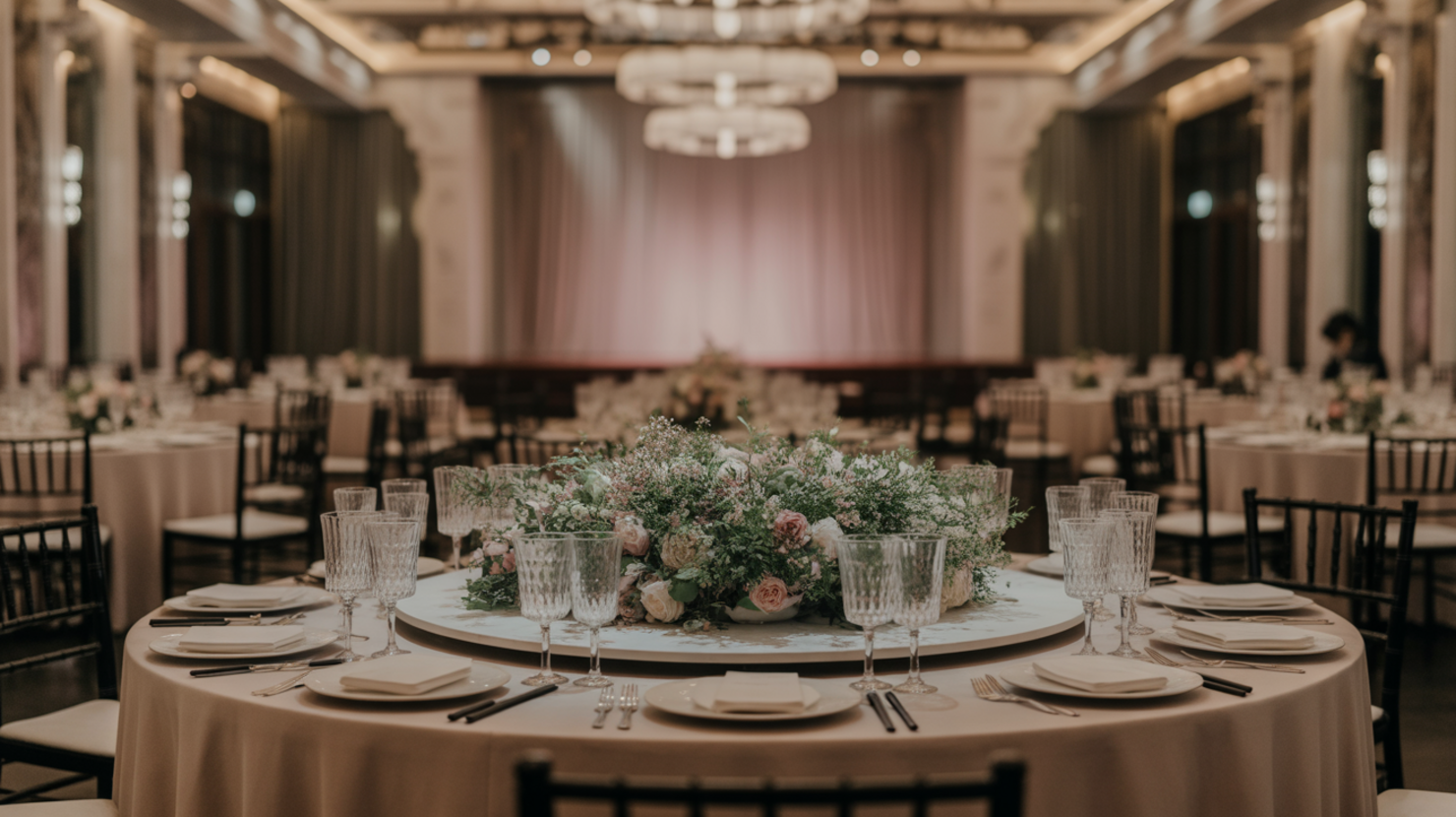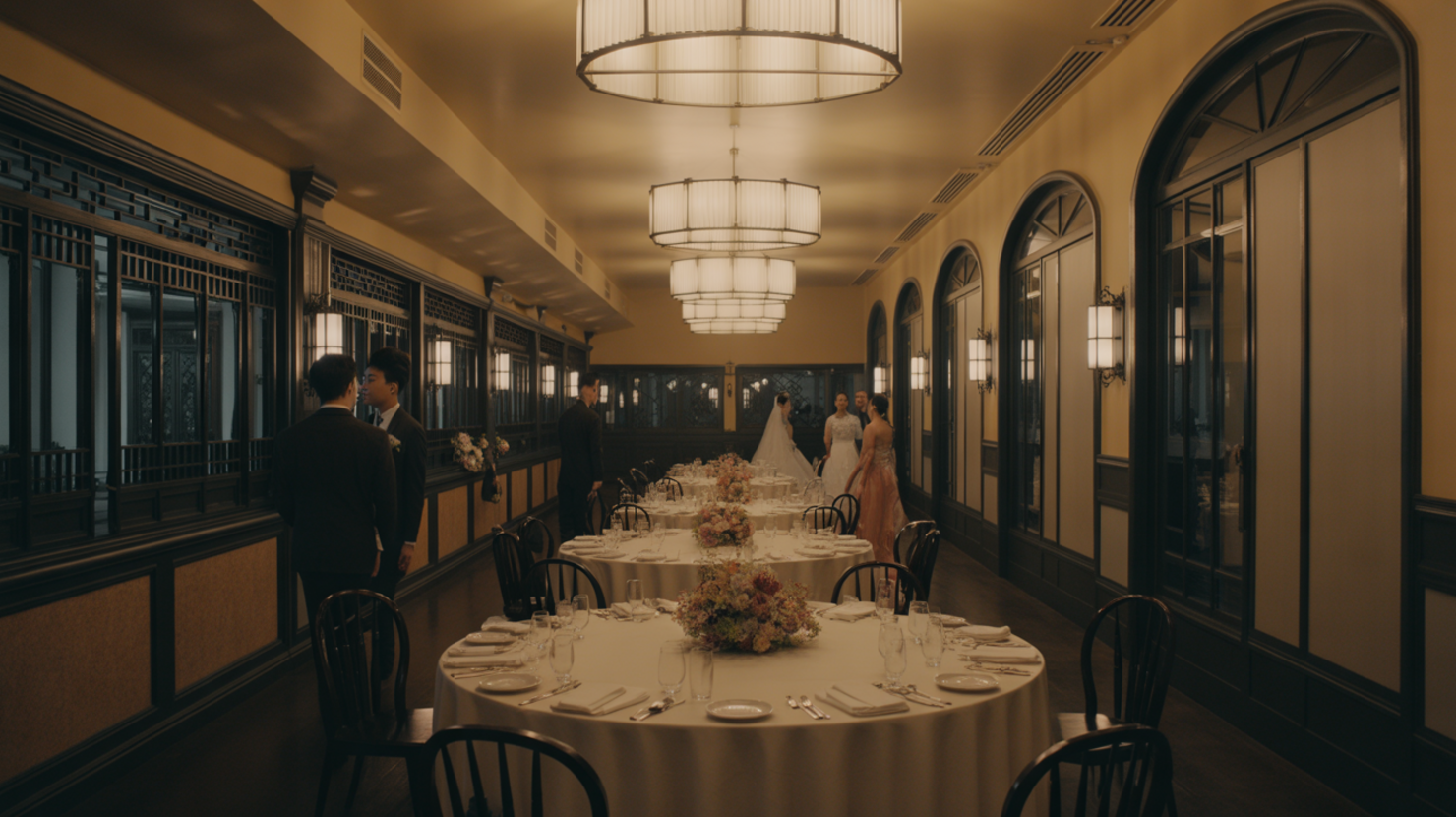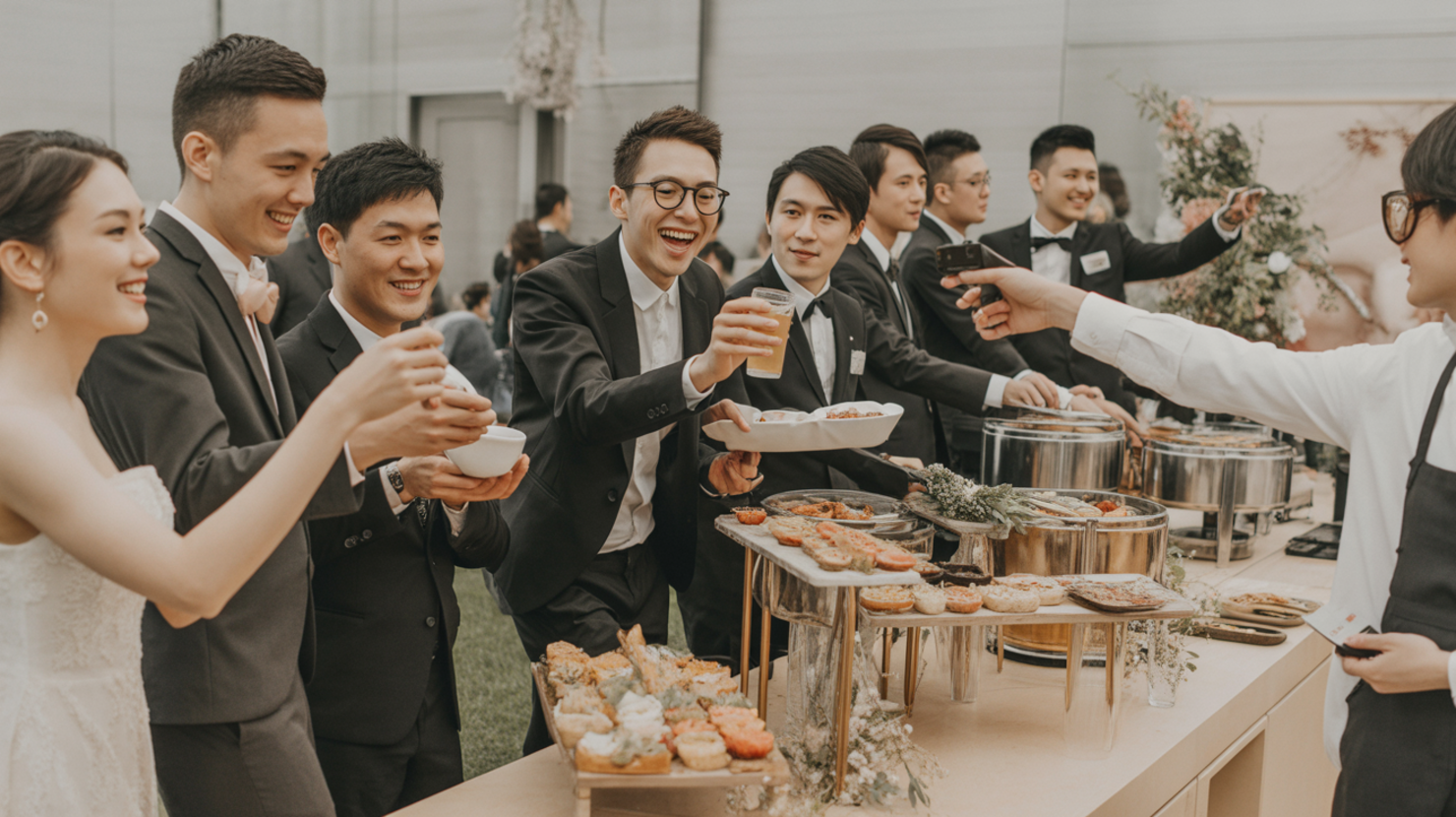“`html
Venue Choice’s Budget Multiplier Effect
When planning a wedding, the venue is arguably the most significant financial decision you’ll make. It’s not just a single line item; it’s a budget multiplier. Experts often cite that the venue and catering combined can consume anywhere from 40% to 60% of your total wedding budget. This substantial chunk of the pie makes selecting the right space the most critical step in controlling overall costs.
Comparing venue types reveals different cost structures. While large hotels often present higher per-person or package prices upfront, they might include a wider array of services like basic decor, standard linens, and sometimes even a wedding coordinator, potentially consolidating costs. In contrast, Chinese restaurants specializing in banquets may offer more competitive per-table pricing. However, you might need to budget separately for elements a hotel includes, such as upgraded decor, specific lighting, or even certain staffing requirements beyond the standard service team. Understanding these nuances is key to avoiding unexpected expenses later on.
Choosing a Chinese restaurant for your wedding banquet also comes with unique cultural perks and built-in advantages, especially regarding cost-effectiveness for traditional celebrations. These venues are purpose-built for large, multi-course meals served family-style at round tables – a hallmark of Chinese weddings. Their kitchens and staff are experts in executing these complex banquets efficiently. This specialization often translates into a seamless catering experience perfectly aligned with cultural expectations, which can be more challenging and potentially more expensive to replicate in a non-specialized venue like a hotel ballroom unless they have specific cultural catering packages.
Ultimately, your venue selection sets the financial stage for everything else. Opting for a dedicated Chinese restaurant banquet hall can offer cultural authenticity and catering expertise often at a different price point compared to the broader services of a hotel. It’s essential to weigh the base costs against potential add-ons and the inherent value of a venue specializing in the specific type of event you wish to host. For more general wedding budgeting advice, resources like The Knot or Brides can offer helpful starting points.
Base Package Cost Components Compared
Moving past the initial venue choice, understanding how Chinese restaurants structure their wedding package pricing is crucial. The core of your wedding budget often resides in the base package cost, but how this is calculated differs significantly between mid-range and luxury establishments, impacting your overall spend and planning approach.
For mid-range Chinese restaurants, the most common pricing model is per-table pricing. This is a straightforward calculation where you are charged a set amount for each table of guests, typically seating 10 to 12 people. The per-table price usually includes a standard multi-course banquet menu, basic non-alcoholic drinks like tea and soft drinks, and the use of the banquet space for a set number of hours. This model makes budgeting relatively predictable once you have a firm guest count, as the total cost is simply the per-table rate multiplied by the number of tables required. It offers transparency and ease of comparison between different venues at a similar price point.
In contrast, luxury Chinese restaurants often operate on a minimum spend requirement. This means the couple agrees to spend a total minimum dollar amount on food, beverage, and sometimes venue rental, regardless of the exact number of tables used (within the venue’s capacity). This minimum spend is a commitment to generate a certain level of revenue for the venue. While it can offer more flexibility if your guest count fluctuates slightly, it typically necessitates opting for higher-tier menus, premium beverage packages, or utilizing additional venue services to meet the threshold. Falling short of the minimum means paying the difference, making careful planning essential.
Despite these different structural approaches, you’ll find overlapping inclusions that are standard in both mid-range and luxury packages. These typically cover the fundamental elements needed for the banquet. You can generally expect the package to include a standard multi-course Chinese banquet menu, basic table settings, standard linens, and access to a basic sound system and microphone. Service staff for the duration of the meal service is also a consistent inclusion across both tiers. Recognizing these common elements allows you to focus your comparison on where the value truly diverges: the quality of ingredients, menu options, beverage upgrades, and the level of personalized service, which we’ll explore further.
Menu Tier Differences That Matter
The menu is often the most tangible difference guests experience between a mid-range and a luxury Chinese restaurant wedding package. It’s not just about the number of courses, but the quality and exclusivity of what’s served. Understanding these distinctions is key to evaluating value.
A primary divergence lies in ingredient quality. Mid-range packages typically feature good, standard ingredients sourced reliably. The dishes are delicious and familiar. Luxury packages, however, boast premium, often seasonal, and sometimes regionally-sourced ingredients. This could mean using higher-grade cuts of meat, organic vegetables, or specialty mushrooms. The superior quality impacts flavour, texture, and the overall sophistication of each dish.
Seafood, a cornerstone of Chinese banquets, highlights a significant tier difference. While mid-range menus will include staple seafood like standard fish varieties, shrimp, and potentially squid, luxury menus elevate this considerably. Expect high-value items such as live lobster, premium whole steamed fish (like Garoupa), abalone, or king crab. These items often appear in multiple courses in a luxury package, sometimes presented as elaborate, showpiece dishes, reflecting both expense and prestige.
Drink packages also vary widely. Mid-range options usually include unlimited basic soft drinks and Chinese tea. Alcohol, if desired, is typically BYOB with a corkage fee, or an extra cost for a limited, often house-brand selection of wine or beer. Luxury packages are more generous, offering a wider array of soft drinks, specialty teas, and frequently including a basic wine package (house reds and whites) and beer. Some may even include a limited selection of basic spirits. While premium alcohol upgrades remain extra, the included beverage selection is notably broader and of higher perceived value.
Ultimately, the menu differences, from the quality of basic ingredients to the inclusion of high-end seafood and a more varied drink selection, directly correlate with the package price and significantly shape the guest’s culinary experience and perception of the event’s luxury level.
Unseen Expenses in Wedding Contracts
Navigating a wedding package price can feel straightforward at first glance, but savvy couples know that the initial quote often doesn’t tell the whole story. When comparing mid-range and luxury Chinese restaurant wedding packages, it’s crucial to look beyond the per-table cost and delve into the unseen expenses lurking within the contract fine print. Ignoring these can lead to significant budget surprises down the line.
One of the most common hidden costs is the service charge. This isn’t a tip; it’s an administrative fee added to the total bill, often covering staff wages, operational costs, and sometimes even included in the minimum spend calculation (though this varies). Service charge percentages can range significantly, typically falling between 10% and 22%. A luxury venue might have a higher percentage, but even a mid-range restaurant can add a substantial amount depending on the total food and beverage spend. Always clarify if this charge is included, what percentage applies, and if it’s applied to the total bill before or after taxes.
Another potential surprise is the corkage fee, especially if you plan to supply some of your own alcohol, such as specific wines or spirits for toasts. Restaurant policies vary widely here. Some charge a flat fee per bottle opened, others per table, and some might offer a buyout option or even prohibit outside alcohol altogether. Comparing corkage fee structures is vital if you anticipate bringing your own beverages, as costs can quickly add up, potentially negating any savings from purchasing alcohol externally. Ensure you understand the restaurant’s policy and any associated costs before signing.
Finally, consider the potential for overtime staff costs. Wedding receptions rarely run precisely to schedule. If your celebration extends beyond the contracted time, you will likely incur additional charges for staff who stay later. Clarify the standard end time for the venue and how overtime staff cost calculations are handled. Is it a fixed hourly rate per staff member? A flat fee per hour for the event space? Knowing these details beforehand allows you to either plan your timeline strictly or budget for potential overruns, preventing an unexpected bill post-celebration.
Understanding these three common unseen expenses – service charges, corkage fees, and overtime staff costs – empowers you to ask the right questions and compare package costs more accurately. Always review the contract thoroughly and ask for clarification on any fees that aren’t explicitly outlined in the initial package proposal.
Service Quality Across Price Points
Beyond the menu and decor, the level of service significantly shapes your wedding day experience. When comparing mid-range and luxury Chinese restaurant packages, you’ll find key distinctions in how smoothly your event runs and how well your guests are attended to. These differences, often subtle on paper, can make a substantial impact on the day itself.
A primary indicator of service quality is the staff-to-guest ratio. Luxury packages typically boast a lower ratio, meaning more staff are available to cater to fewer guests. This translates to faster service for drink refills, quicker clearing of plates, and more immediate assistance with guest requests. In a mid-range setting, staff might be managing more tables, which can occasionally lead to delays, though good mid-range venues still aim for efficiency. The attentiveness and responsiveness of the service staff contribute greatly to the overall guest comfort and satisfaction.
Another critical difference is the availability of a dedicated wedding coordinator. High-end luxury packages often include a specific coordinator assigned to your event from planning through execution. This person acts as your main point of contact, helping coordinate vendors, manage timelines, and troubleshoot issues on the day. This level of dedicated support can dramatically reduce stress. Mid-range packages might offer a banquet manager who handles logistics related to the venue itself but may not provide the comprehensive planning and day-of coordination a dedicated coordinator offers.
Finally, consider the vendor partnership networks. Luxury venues often have established relationships with a curated list of high-quality external vendors, such as decorators, florists, photographers, and entertainment providers. They may recommend trusted partners, or even offer package deals that integrate these services seamlessly. While mid-range venues might also have recommendations, you might have more flexibility (or necessity) in sourcing and managing your own vendors, which adds to your planning workload but could also offer cost savings or more personalized choices. Evaluating these service facets is essential for understanding the true value proposition of each package tier.
Personalization Potential by Tier
Making your wedding day feel uniquely yours is a priority for many couples. However, the extent to which you can personalize your celebration often correlates directly with the wedding package tier you choose, particularly when comparing mid-range versus luxury Chinese restaurant venues. Understanding these differences is crucial for aligning your budget with your vision.
In mid-range packages, personalization tends to have more inherent limitations. While venues typically provide standard décor packages, including basic linens, chair covers, and centerpieces, significant customization can be challenging or costly. You might find limited options in color palettes or styles included in the base price. Bringing in extensive outside décor might incur additional setup fees or vendor restrictions. The focus here is often on providing a complete, functional setup rather than bespoke design.
Conversely, luxury packages generally offer significantly more flexibility in décor customization. These venues often have higher allowances for floral arrangements, premium linen options, and access to a wider network of high-end décor vendors. They are more accustomed to working with couples who wish to implement specific themes, elaborate lighting designs, or unique aesthetic elements. This tier allows for a greater degree of creative control to transform the space to match your dream wedding style.
Menu adaptation also varies considerably. Mid-range packages typically feature fixed banquet menus with perhaps one or two options for swapping dishes. Accommodating complex dietary restrictions beyond basic vegetarian needs might require separate, less integrated meal solutions. Luxury venues, however, are more inclined to work with you to tailor the menu. This can include upgrading specific dishes, incorporating premium ingredients, creating custom courses, and seamlessly handling various dietary needs and allergies with greater finesse and integration into the main service.
When it comes to entertainment integration, both tiers offer options, but the scope differs. Mid-range venues usually provide a standard sound system and might have a list of preferred vendors for DJs or basic live music. Integrating more complex entertainment, like elaborate stage setups or specific cultural performances, might face logistical hurdles or additional charges. Luxury venues are often better equipped with superior audio-visual infrastructure and are more flexible in accommodating diverse entertainment needs, including intricate setups for bands, traditional performers, or unique acts, often working closely with external vendors to ensure a smooth execution.
Understanding these tiered differences in personalization potential allows couples to manage expectations and allocate their budget effectively, ensuring that key elements reflecting their personalities and cultural preferences are prioritized within the chosen package level.
Strategic Luxury Investments
When navigating the options between mid-range and luxury Chinese restaurant wedding packages, it’s crucial to identify where strategic spending yields the most significant return. Not all luxury add-ons provide equal value; smart choices focus on elements that create lasting memories or dramatically enhance the guest experience. Understanding these key investment areas helps couples allocate their budget wisely, ensuring splurges contribute meaningfully to their special day.
One of the most valuable areas for a luxury investment is professional photography and video coverage. While standard packages may include basic coverage, upgrading often means securing a more experienced team, longer hours, or additional services like a second shooter or aerial drone footage. These professionals capture the candid moments, cultural traditions, and intricate details of your celebration, transforming fleeting moments into timeless keepsakes. High-quality photos and videos are arguably the most enduring return on your wedding investment, allowing you to relive the day’s joy for years to come. Think of it as investing in your future nostalgia. Exploring portfolios of experienced wedding photographers and videographers specializing in cultural events can highlight the difference quality makes.
Another element that can visibly elevate the banquet hall’s aesthetic is premium linen rentals. Standard restaurant linens are functional but often lack flair. Upgrading to high-quality fabrics, textures, or colors for tablecloths, chair covers, and napkins can dramatically transform the room’s ambiance. This investment directly impacts the visual appeal of your reception, enhancing both the overall decor and the look of your wedding photos. Evaluate the cost against the perceived impact on the guest experience and the aesthetic goals for your wedding. While not a permanent memento, the visual luxury contributes significantly to the day’s atmosphere. Sources like Style Me Pretty’s guides on wedding decor often highlight the impact of linen.
Finally, consider the lasting impression of branded keepsakes or wedding favors. Luxury packages might offer more elaborate or personalized items. Analyze the perceived value and utility of these favors for your guests. Will they be cherished mementos or quickly discarded? Investing in thoughtful, high-quality favors that align with your theme or provide practical value can leave a positive impression. However, comparing the cost of elaborate keepsakes to other potential investments, like enhanced photography or decor, is essential to ensure your budget is allocated where it creates the most meaningful impact and provides the best value retention in the long run.
Budget Allocation for Future Memories
While the immediate delights of a Chinese wedding banquet – the sumptuous feast, the festive atmosphere, the beautiful decor – are undeniably important, smart budget planning also considers the lasting memories you’ll cherish for years to come. It’s easy to get caught up in the expenses of the day itself, but allocating funds strategically can ensure your most treasured moments are preserved beautifully.
Think critically about where your budget goes. A prime example is prioritizing photography and videography over highly perishable decor. Elaborate floral arrangements or temporary backdrops are stunning on the day, but high-quality photos and videos are forever. Investing in a skilled photographer familiar with capturing the unique dynamics and cultural traditions of a Chinese wedding ensures you can relive those moments, from the tea ceremony to the banquet toasts, whenever you wish. Consider this a crucial investment in your future happiness.
Achieving the perfect balance between the necessary splurges covered by your wedding package (like the venue and food) and incorporating personal, often cultural, touches is key. Don’t feel pressured to upgrade every single element in your package. Sometimes, integrating DIY cultural elements or sourcing specific items separately can be more cost-effective and add deeper personal meaning. This might involve crafting unique favors, designing your own traditional wedding stationery, or incorporating family heirlooms into the decor.
Finally, remember that wedding costs don’t end when the last guest leaves the banquet hall. It’s vital to budget for post-wedding costs as well. These can include things like professional wedding attire preservation (especially important for delicate traditional garments), printing photo albums or creating custom prints, and sending out elegant thank-you cards to acknowledge your guests’ generosity and presence. Factoring these expenses into your overall financial plan from the beginning prevents unwelcome surprises down the line and ensures you can comfortably wrap up all wedding-related tasks. Focusing your budget strategically on lasting memories ensures the joy of your wedding day endures far beyond the event itself.
“`



